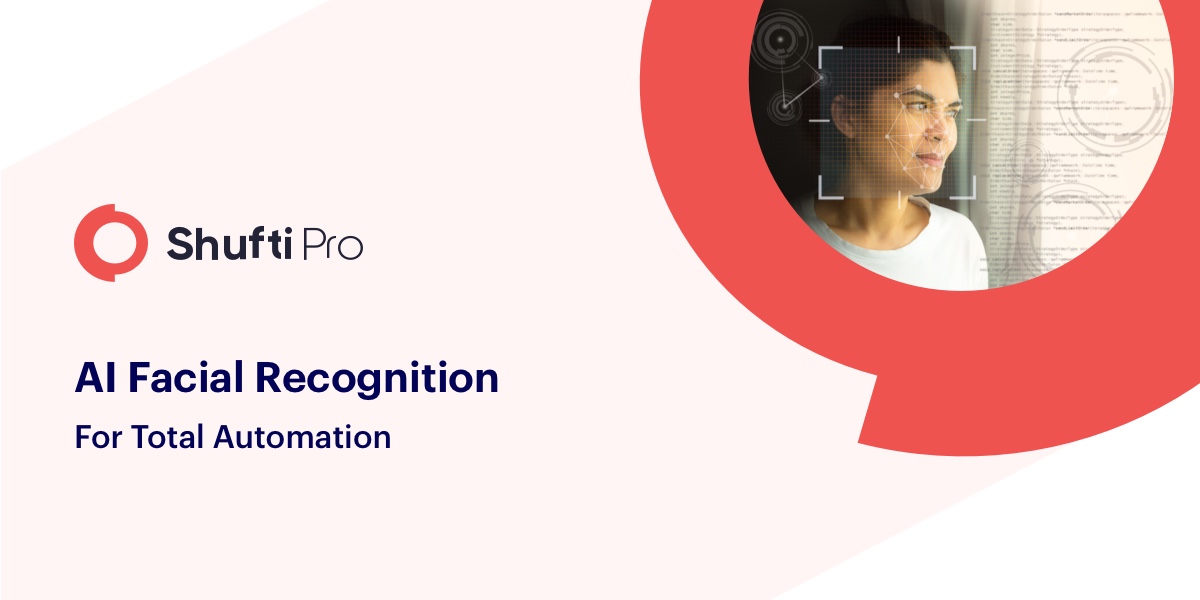AI face recognition for total automation

Face recognition is everywhere but still we’re unable to say goodbye to document, maybe because we’re still far away from total automation that we wish to achieve with this technology.
A research stated that the global facial recognition market is expected to grow at Cumulative Annual Growth Rate (CAGR) of 16.6% reaching a record-high value of USD 7.0 billion by 2024. This growth is quite justified as we see face recognition everywhere in our day to day life.
Nations such as U.S., U.K, EU, China, etc are leading the convoy of these technological advancements where one’s face will replace the identity documents. Face verification solutions are used everywhere, from our mobile phones, and Facebook, to crime control agencies and airports. But this awesome technology has unique limitations and benefits for different industries where it’s used, that will be explored in this blog.
What is AI-based facial recognition?
Face recognition technology is used to verify the identity of a person. The face of the person is scanned and converted to algorithms that are then matched with the photos in the databases, saved in the form of machine learning algorithms. It eliminates the need for carrying ID cards and lengthy identity screening processes. Hence it is one of the commonly used biometric services.
Let’s explore some use-cases of face recognition.
Travel is becoming document-free
An increasing amount of airports are using face verification solutions to verify the identity of their passengers. As airports are commonly used for huge crimes such as human trafficking, money laundering, and drug trafficking. The documents are losing their touch which leads the airports to use advanced technologies for passenger screening. Passenger security and their travel experience are equally significant and face verification satisfies both these requirements. Accuracy rate as high as 98.67% is achieved with facial recognition and results are delivered within 15-60 seconds. It enhances customer experience, reducing the time consumed for security processes.
Given these valuable benefits of face recognition technology, it’s predicted that 97% of airports will roll out this technology by 2023. But this is not the end of the story, because the airports are lacking in using this technology throughout the passenger flow in the airports. Maybe because they lack resources that Hartfield-Jackson Airport holds. This airport in Atlanta uses a multi-faceted facial recognition system that scans the passengers to verify their identities at various check-points in the airport. This airport provides an ultra-modern view of what the future holds for the travel industry.
Businesses utilizing facial recognition
Businesses are always in a bid to deliver the best to their customers, especially the ones that operate in totally private sectors, with no government players. Industries such as e-commerce, Fintech, Regtech, identity verification, and blockchain are trending as they’re carving the future of how businesses will be conducted in the future.
These industries are the primary users of next-generation technologies due to nature of their products and services. The identity verification industry uses it in customer due diligence and identity screening solutions. These solutions use face verification along with document screening to ensure fool-proof security and seamless consumer onboarding. Fintech and blockchain ventures are using the solutions of the identity verification industry to onboard their remote customers without any false positives.
Other than that, some tech giants such as Google, Facebook and Amazon are also using in-house face recognition systems. Mobile phone producers are also using face recognition to give a better experience to their consumers. All these unconventional use-cases of this technology have made it a household term.
Face recognition for crime control
Crime control authorities are always in a bid to bridge the loopholes in social infrastructure which may lead to criminal activities. FBI uses facial recognition to identify the suspects, and if a match is found in the database of criminals, it can be used as the proof l to pursue a lawsuit against him.
Also, the police department in some states of the U.S uses face recognition technology to identify the criminals in the recordings of public cameras. The police departments are still working on this initiative as the social activists have found privacy related loopholes in it.
What are the hurdles in the growth of face recognition technology
Regulatory authorities have not given a free hand to the entities in using this technology. There are some restrictions on the use of public data.
The Anti-surveillance ordinance signed by San Francisco’s Board of Supervisors banned the city agencies to use face recognition technology in 2019. Other states that ban the use of surveillance camera recordings to find the suspect are Somerville, Oakland, and San Diego.
The best solution to overcome these hurdles is to use the technology with care and to handle the customer data with care.
Customer data and privacy is the primary concern of the regulatory authorities hence the reason the laws such as GDPR and CCPA are introduced to control the use of customer data by the private sector.
So far the private sector is the one that is least affected by the hurdles in the use of facial biometrics, compliance with data protection regulations and cautious usage of customer data will lead to the projected growth of the facial recognition industry.
To wrap up, businesses from every corner of the world are onboarding remote customers and initiating business relations with global business entities. Face recognition solution enables them to onboard customers and to allow secure login to them in the future. As the businesses have a bigger and clear field to play, fully utilizing the potential of this technology controlled with data protection practices will lead to retainable growth. As for the public sector and government agencies, the future is bright one they have developed reliable in-house solutions.










